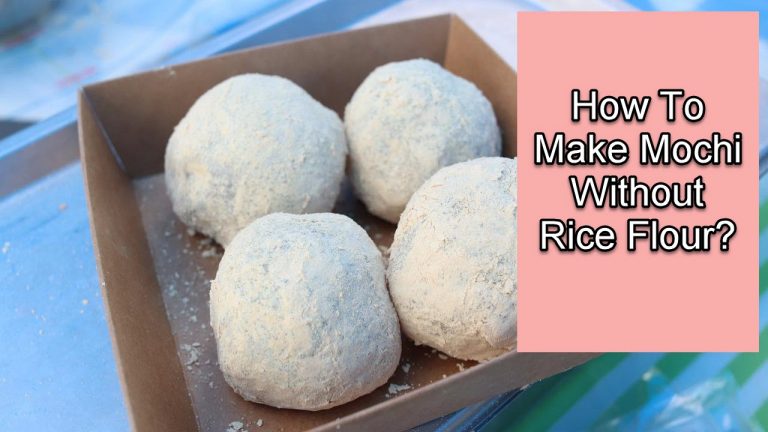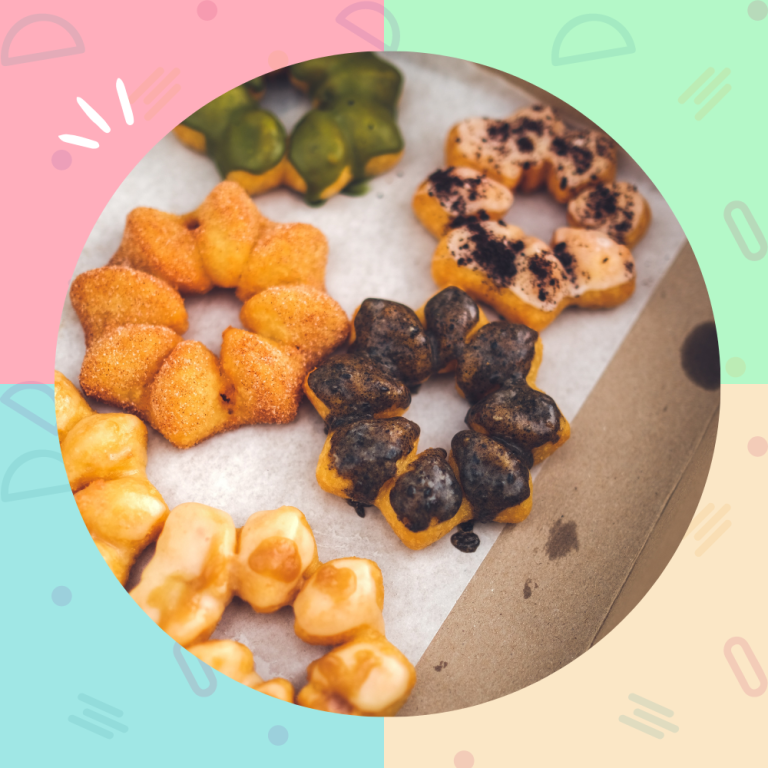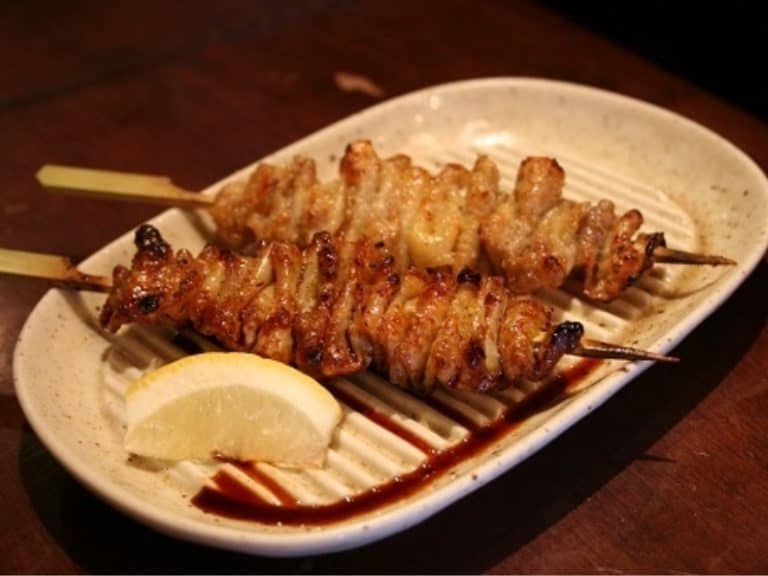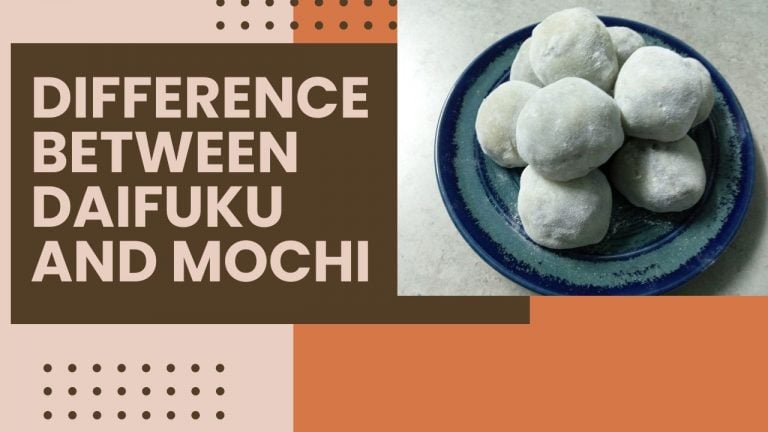Different Types Of Sushi
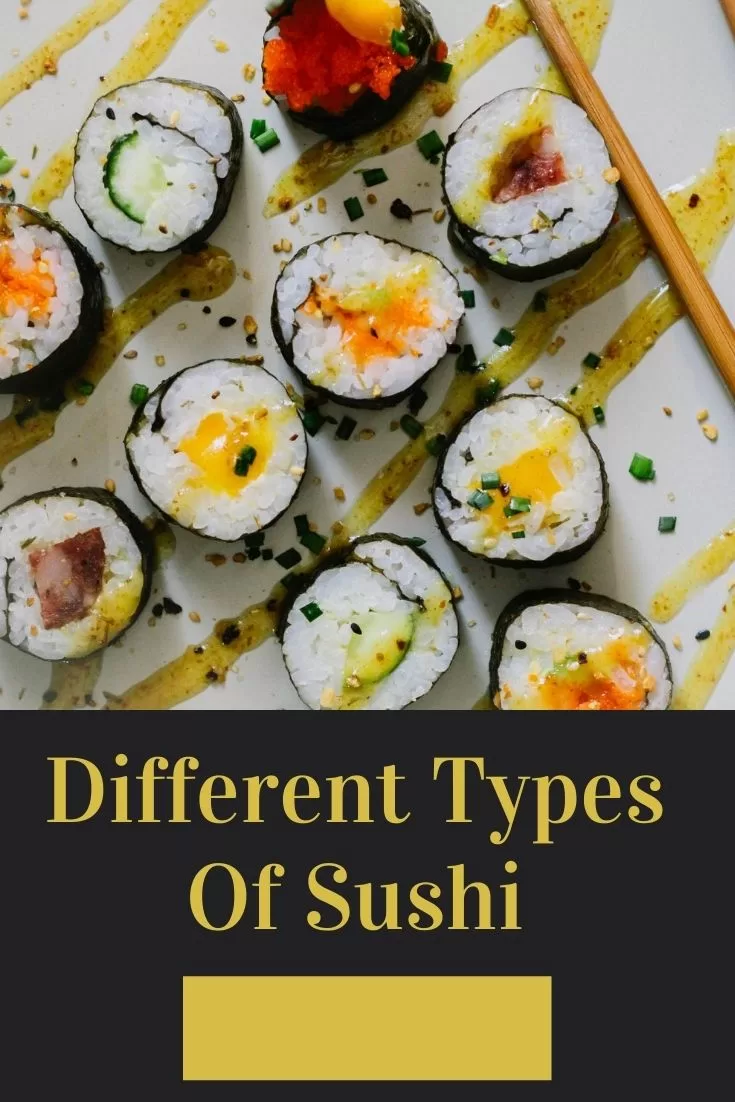
If you imagine sushi as just raw fish on top of rice or fish inside a roll, you are about to get a big surprise. There are many other types of sushi rolls aside from the well-known maki and nigiri sushi.
| Product | Brand | Name | Price |
|---|---|---|---|
 | RiceSelect | RiceSelect Sushi Rice, 32-Ounce Jars, 4-Count, 905629 | Check Price on Amazon |
 | Marukan | Marukan Rice Vinegar, 24 Ounce (Pack of 2) | Check Price on Amazon |
 | CHOI'S 1 | Daechun(Choi\'s1), Roasted Seaweed, Gim, | Check Price on Amazon |
 | Kikkoman | Kikkoman, Wasabi Sauce, 9.25oz Bottle (Pack of 2) | Check Price on Amazon |
 | Kikkoman | Kikkoman Sushi & Sashimi Soy Sauce Bottle, 10 Fl Oz (Pack of 3) | Check Price on Amazon |
 | violife | Violife, Spread Cream Cheese Original Vegan Gluten Free, 7.05 Ounce | Check Price on Amazon |
 | Kikkoman | Kikkoman Unagi Sushi Sauce, 11.8 oz (Pack of 2) | Check Price on Amazon |
* If you buy through links on our site, we may earn an affiliate commission. For more details, please visit our Privacy policy page.
If you’ll check a sushi menu at your local Japanese sushi restaurant or sushi bar, you’ll be surprised to see the many types of sushi rolls. It can take a while before you’ll get familiar with all of them.
To help you remember the different types of sushi, check out our detailed guide for you.
What is Sushi?
Sushi is a popular dish from Japanese cuisine. Its main component is vinegared rice which is generally made of Japanese short-grain rice. The vinegar in the rice plays an important role in achieving the signature taste of the dish.
Depending on the sushi chef, other ingredients may be added such as raw or cooked seafood, egg, vegetables and many others. There are also common dipping sauces and garnishes for sushi including wasabi or Japanese horseradish, soy sauce and pickled ginger.
10 Different Types of Sushi: A-Must-Try Traditional Japanese Sushi
1. Nigiri
Of the different types of sushi, Nigiri is considered one of the most popular. Nigiri means hand-pressed sushi. This is the type of sushi that comes with a mound of oval-shaped vinegared sushi rice. The rice is then topped with raw fish such or cooked seafood. Sometimes, the sushi chef may also add tamago (fish eggs) or other types of vegetables.
The fish in nigiri is almost always raw. Examples are raw tuna, salmon, albacore, and yellowtail. Other seafood such as shrimp and eel are usually buttered, boiled or grilled before adding to the rice.
Some sushi chefs add a small amount of wasabi in between the fish and the rice as a garnish. But this type of sushi is more often served with soy sauce for dipping.
2. Maki Sushi (Makizushi)
Among the different types of sushi, maki sushi is perhaps one that you can easily recognize. This is the sushi that many people are familiar with.
Known as the traditional Japanese-style sushi roll, maki sushi rolls or makizushi may come with various ingredients such as fish or seafood, vegetables, eggs, and sushi rice. These ingredients are all rolled together using a dried crispy seaweed sheet or nori. The sushi rolls are then cut into bite-sized pieces before serving with soy sauce or other dipping sauce.
There are different types of sushi rolls that are popular in Japan. Among them are:
- Futomaki sushi rolls- translated as fat rolled sushi, this sushi roll is literally thick and is usually considered a vegetarian sushi roll. Some of the common ingredients for futomaki sushi rolls are cucumber, fish eggs, spinach, and more. It is popular sushi for special occasions.
- Hosomaki sushi rolls- this is the smallest and most basic maki sushi. Hosomaki sushi rolls usually contain cucumber, tuna, salmon, or real or imitation crab sticks.
- Uramaki sushi rolls- uramaki means inside out and this sushi is just that. In typical sushi, nori wrapped all the ingredients to form a roll. With uramaki sushi rolls, it is the other way around. The nori sheet is inside the roll while the rice is on the outside. This inside-out sushi roll is popular in the US.
In the US, you’ll also find Western Style sushi which is their own take of the different types of sushi rolls. Some of the most popular Western-style sushi rolls are:
- California Roll – This sushi is one of the most popular sushi rolls in the US. A California roll is a type of uramaki where the rice mixed with vinegar is on the outside. The common ingredients for California rolls are cucumber, imitation crab meat, avocado and cream cheese. Sometimes you may also find a California roll that contains flying fish roe or tobiko. The California Roll is well-known sushi in the US, yet it is not very common in Japan.
- Spicy Tuna Roll – this is another type of rolled sushi that’s very popular in the US. The main ingredients for spicy tuna rolls are vinegared rice, nori and raw tuna mixed with spicy mayonnaise or cream cheese. More often, cucumber and avocado are also added to the spicy tuna rolls.
- Spider Roll – A spider roll uses a soft-shell crab that’s breaded and fried as its main ingredient. The fried crab is then combined with other ingredients such as cucumber, radish, sesame seeds and mayonnaise or cream cheese. Most chefs make a spider roll like traditional maki sushi with the nori sheet on the outside. Sometimes, the sushi roll is cut into two with the legs of the crab protruding from the roll. This makes the sushi look like a spider.
- Shrimp Tempura Roll – The shrimp tempura roll is similar to spicy tuna rolls and California rolls in that the nori is on the outside. Instead of using raw fish, the main filling of shrimp tempura rolls is the tempura-fried shrimp with the tails still on for better presentation. It may come with different types of vegetables such as avocado and cucumber. To spruce up the tempura rolls, they may come with Unagi sushi sauce.
- Dragon Roll – A dragon roll is very similar to a tempura roll in that it also uses tempura fried shrimp plus other sorts of ingredients such as vinegared rice, nori, cucumber and sesame seeds. Dragon rolls are designed to make it look like a dragon by adding thinly sliced avocado on the outside as the dragon scales. To enhance the taste of dragon rolls, they are usually drizzled with unagi sauce and spicy mayonnaise.
3. Narezushi
Among the different types of sushi, the narezushi is a less common one. Many people consider it an odd sushi because it uses fish that is fermented for months in rice and salt. Hence, it is called fermented sushi.
The fermentation process gives the fish its sour and pungent flavor. This type of sushi is believed to be the predecessor of the sushi we now enjoy.
Today, select sushi restaurants serve a variety of this type of sushi called funazushi. It takes about 5 years to ferment the fish before it is served. This is the reason why this sushi is so expensive.
4. Temari Sushi
Temari sushi is one of the traditional types of sushi. In Japanese culture, temari is an embroidered ball that kids used to play with. So this sushi has a small ball-shaped mound of rice topped with fish. It is more like a smaller version of nigiri sushi. Because of its small size, it’s great finger food for any celebrations at home.
The usual raw fish used for Temari is raw salmon and smoked salmon. Other fish and seafood can also be used. It goes well with soy sauce for dipping.
5. Chirashizushi
Among the different types of sushi, this one is unique in that instead of the bite-sized piece of roll, this sushi comes in a bowl.
Chirashizushi means scattered sushi. It is composed of a bowl of vinegared rice topped with raw fish such as tuna or salmon. Other ingredients are also added like the ikura salmon roe, shredded egg and nori and vegetables. It is a colorful and easy-to-prepare dish that’s popular at parties.
6. Oshizushi
The different types of sushi rolls that we now know reflect the regional diversity of Japanese cuisine. One type of sushi with a strong regional origin is the oshizushi.
Oshizushi means pressed sushi or box sushi. Among the different types of sushi rolls, this one is considered the oldest form.
First created in the Osaka region, it is now popular in other parts of the country. This sushi is created by layering the ingredients in a rectangular box. The common ingredients include raw fish such as salmon and mackerel. Other ingredients such as bamboo leaves and gizzard shad are also added.
This type of pressed sushi is common in the Osaka region where it was first created. It is made by layering the different sushi ingredients inside a rectangular box. The resulting dish looks like angular rice sandwiches which are typically served in a bento box.
7. Sasazushi
This sushi is probably one you’ve never heard of. It is a local and old style-sushi that is usually made using wild vegetables on a bed of sushi rice with a bamboo leaf as a plate. This is one of the types of sushi worth trying if available at a sushi restaurant you are visiting.
The most common toppings for this type of sushi are rice and other varieties of fish as well as vegetables and eggs. Some varieties also include bamboo shoots, nuts and mugwort.
8. Inarizushi
The different types of sushi rolls never fail to amaze us. There’s always that unique element in each type. The inarizushi for example is different because of its use of thin deep-fried tofu as its wrap instead of the usual nori sheet.
Another distinct characteristic of this type of sushi rolls compared with the other types in our list is that instead of a savory flavor, this one is a bit sweet although it is not considered a dessert. Most varieties also do not contain fish or seafood. Inarizushi sushi rolls are a popular side dish for other types of sushi rolls.
9. Gunkan Sushi
Gunkan sushi rolls are like the maki sushi, but the difference is that it has a ship-like form (gunkan). This is done by having the seaweed around the side of the rice while the filling is on top of the rice instead of being rolled inside.
The ship-like shape on top of the fermented rice creates a perfect shape for adding different ingredients. The most common ingredients for this type of sushi are salmon roe, flying fish roe and sea urchin roe.
10. Kakinoha-Zushi
Last on our list but definitely not the least is the sushi from Japan’s Nara region. One unique characteristic of this dish is that the rice is wrapped in a kaki leaf (persimmon).
This type of sushi is very easy to make. You just add a thin slice of fresh fish or cooked seafood on top of the vinegar fermented rice, then wrap it with a leaf like a small package. The popular fillings for this type of sushi are mackerel and salmon
FAQ
Is sushi with raw fish safe to eat?
If you like to eat sushi but are worried if it is safe to consume, the general answer is yes. However, just like any food, you should consume it in moderation. It is also important to note that some types of fish used in sushi such as tuna are high in mercury. In some cases, the fish may also carry food-borne diseases. That is the reason why if you are pregnant or have a special health condition that compromises your immune system, it’s best to avoid sushi.
What is the healthiest sushi?
There is really no definite answer to this question as each of the sushi rolls we listed above are unique in terms of ingredients. Since the nutritional value or health benefits depend on what’s in the sushi, the healthiest are those that have a good combination of fish and vegetables. Fish such as tuna, mackerel and salmon are rich in omega-3 fatty acids which can boost your overall health.
How do I eat my sushi?
Generally, you eat sushi with your hand. You should hold it in a way that the fish should touch the soy sauce and not the rice. And when you put it in your mouth, make sure that the fish side (or topping) touches your tongue so you get the enjoy the full flavor of the dish.
What is the best sauce for sushi?
When you visit a sushi bar, you can easily get overwhelmed by the variety of sauces available. However, if you are not sure what to use, you can always ask the chef. Alternatively, you’re always safe with soy sauce.
What is the usual side dish for sushi?
There are many popular side dishes for sushi including pickled ginger, miso soup, egg plant, kani salad, daikon sprouts salad, and seaweed salad among others.
Can I buy sushi ingredients at a local grocery?
Because of the popularity of sushi, you can easily find most of the ingredients at your local supermarket. However, the best place to buy is online because of the wider selections available. With online, you can buy almost anything sushi-related such as rice, rice vinegar, Philadelphia cream cheese, nori sheet, soy sauce, and more.
What is the easiest sushi to make for a beginner?
If you want Japanese-style sushi, the easiest ones to make are the nigiri and maki. If you prefer the Western style, you could try the California roll or spicy tuna roll.
Conclusion
Sushi is one of the most fascinating dishes that are definitely a must-try. The best thing about sushi is that there’s a wide variety of options available so you’ll never get bored with the same flavor over and over again.
If you are a beginner at eating sushi, it’s a good idea to first try the most common or popular types as they suit most people and probably will also suit your taste. After trying the common ones, you may also consider trying the least common sushi and see for yourself which one is the best for your taste buds.
Moreover, sushi is a dish you can easily recreate at home using the right ingredients. The most basic ingredients to make sushi at home include fresh fish, sushi rice, rice vinegar and soy sauce. You may also add other ingredients as you like.
Explore the different sushi dishes and you will be amazed at the richness in flavor of each type.
| Product | Brand | Name | Price |
|---|---|---|---|
 | RiceSelect | RiceSelect Sushi Rice, 32-Ounce Jars, 4-Count, 905629 | Check Price on Amazon |
 | Marukan | Marukan Rice Vinegar, 24 Ounce (Pack of 2) | Check Price on Amazon |
 | CHOI'S 1 | Daechun(Choi\'s1), Roasted Seaweed, Gim, | Check Price on Amazon |
 | Kikkoman | Kikkoman, Wasabi Sauce, 9.25oz Bottle (Pack of 2) | Check Price on Amazon |
 | Kikkoman | Kikkoman Sushi & Sashimi Soy Sauce Bottle, 10 Fl Oz (Pack of 3) | Check Price on Amazon |
 | violife | Violife, Spread Cream Cheese Original Vegan Gluten Free, 7.05 Ounce | Check Price on Amazon |
 | Kikkoman | Kikkoman Unagi Sushi Sauce, 11.8 oz (Pack of 2) | Check Price on Amazon |
* If you buy through links on our site, we may earn an affiliate commission. For more details, please visit our Privacy policy page.
